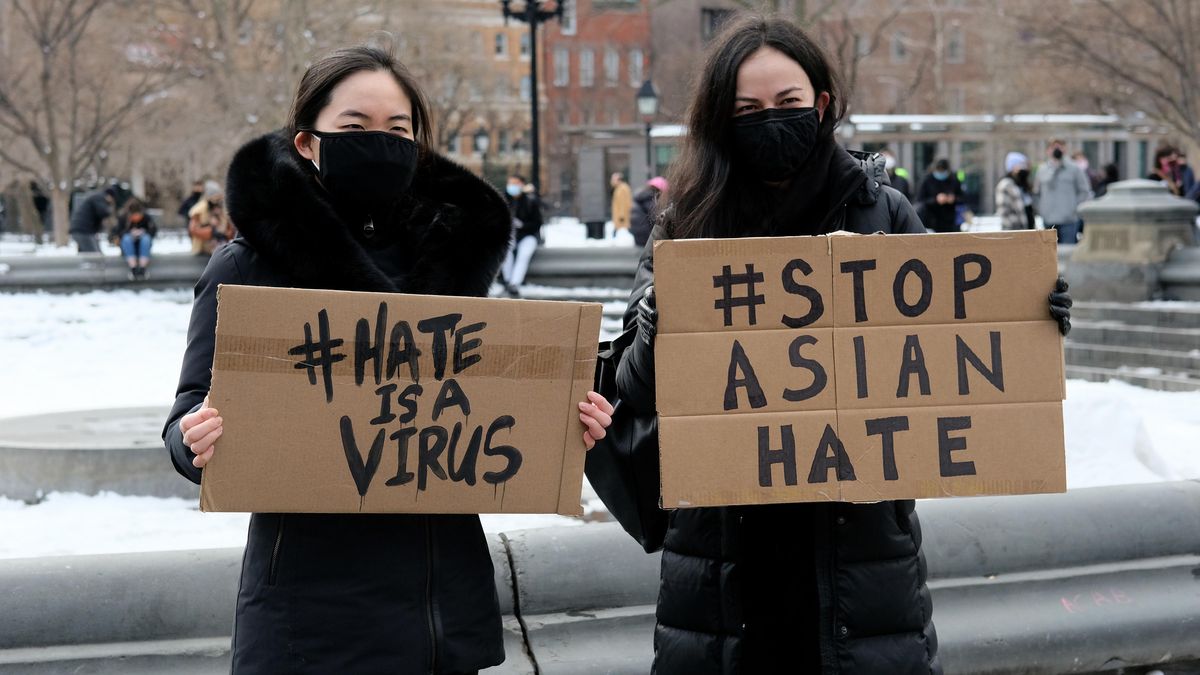This year, Asian American and Pacific Islander Heritage Month comes amidst an on going fight in this country to end AAPI-based hate and violence. In order to become a better ally, it's important to put in the time and effort to learn about the diverse AAPI community, and that starts with its terminology and language.
AAPI stands for Asian Americans and Pacific Islanders. According to the Asian Pacific Institute on Gender-Based Violence, the term includes "all people of Asian, Asian American, or Pacific Islander ancestry who trace their origins to the countries, states, jurisdictions and/or the diasporic communities of these geographic regions." Read on to learn more about the identifier, including the controversial history behind it, as well as other terms related to AAPI people.
Where does the term AAPI come from?
Dr. Dawn Lee Tu, faculty director of professional and organizational development at De Anza College explained to NBC News that the term "Asian American" was coined by student activists in 1968 as a way to unify various Asian ethnic groups in a resistance against imperialism in Southeast Asia. Then, in the 1980s the U.S. Census Bureau created the category "Asian Pacific Islander," though in 2000, "Asian" and "Pacific Islander" became two separate racial categories. So, while the term AAPI does bring the two terms back together, it is important to recognize that they are two distinct groups with very different experiences.
Who may identify as Pacific Islander?
Someone may identify as Pacific Islander if they or their family come from Polynesia, Micronesia, or Melanesia, regions that include countries like, Fiji, Samoa, Tonga, and many more.
Who may identify as Asian?
One may identify as Asian if they have "origins in any of the original peoples of the Far East, Southeast Asia, or the Indian subcontinent including, for example, Cambodia, China, India, Japan, Korea, Malaysia, Pakistan, the Philippine Islands, Thailand, and Vietnam," according to the U.S. Census Bureau.
What other AAPI identifies are there?
While we're here, lets go over some other AAPI-related terms. Some of these may overlap, and this list by no means exhausts that various identities in the AAPI community:
Asian: Someone having origins in any of the original peoples of the Far East, Southeast Asia, or the Indian subcontinent.
East Asian: A person of Chinese, Koreas, Japanese, Taiwanese, or Mongolian descent.
South Asian: A person from Afghanistan, Pakistan, India, Bangladesh, Nepal, Bhutan, Sri Lanka or Maldives.
Southeast Asian: A person from Thailand, Vietnam, Malaysia, Singapore, the Philippines, Laos, Indonesia, Brunei, Burma (Myanmar), Cambodia and Timor-Leste.
Central Asian: A person with origins in the original peoples of Kazakhstan, Kyrgyz Republic, Tajikistan, Turkmenistan and Uzbekistan.
West Asian: A person with origins in the original peoples of Armenia, Azerbaijan, Bahrain, Cyprus, Georgia, Iraq, Israel, Jordan, Kuwait, Lebanon, Oman, Palestine, Qatar, Saudi Arabia, Syria, Turkey, United Arab Emirates and Yemen.
Carolyn Twersky is an associate editor for Seventeen covering celebrities, entertainment, politics, trends, and health. On her off time, she's probably watching Ru Paul's Drag Race, traversing NYC for the best donuts, or, most likely, enjoying time in her favorite place in the world: her bed.













